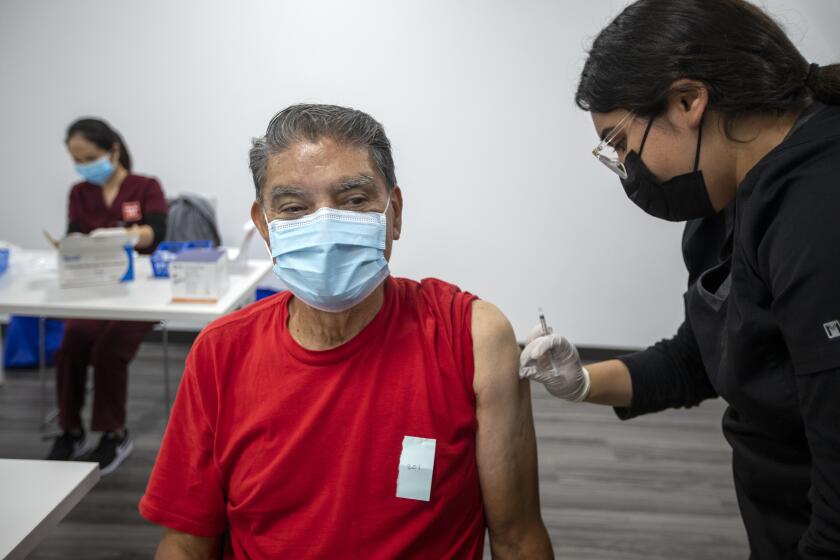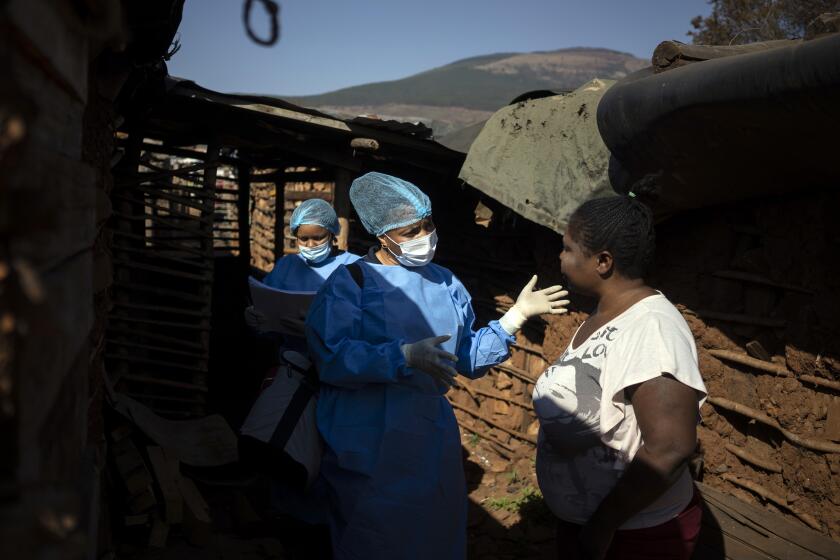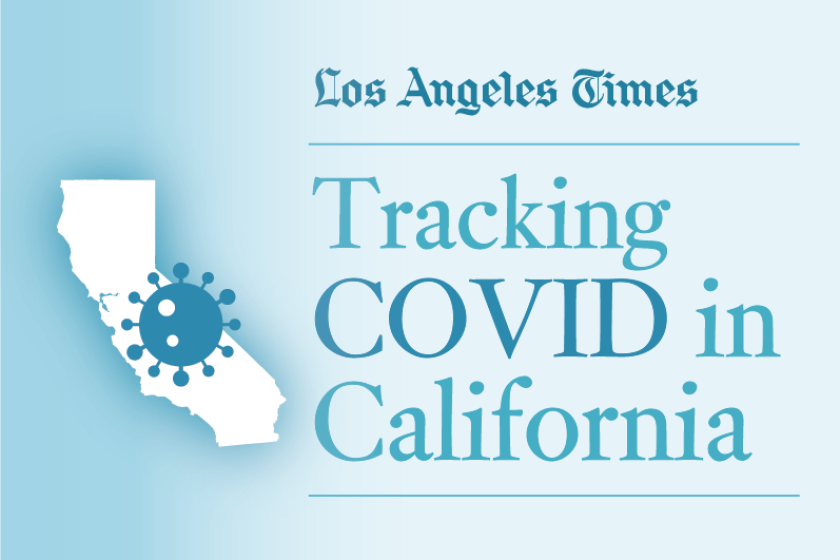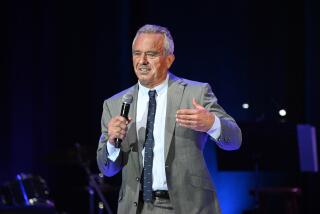Will this pandemic ever end? Here’s what happened with the last ones

- Share via
This started as a story about what happens after a pandemic ends.
I pitched my editor on the idea in early May. Every adult in America could get a vaccine. COVID numbers started to fall. If the Roaring ’20s came after the Spanish flu a century ago, did that mean we were on track for another Roaring ’20s now? Would “Hot Vax Summer” give way to Decadent Gatsby Party Autumn?
I started to dig in. A number of compelling parallels emerged: America 100 years ago had staggering income inequality. A booming stock market. Racial uprisings. Anti-immigrant sentiment. A one-term president plagued by scandals after he left office. Plenty of material for a story.
Then the pandemic didn’t end.
Vaccinations stalled. The Delta variant fueled new waves of infections, hospitalizations and deaths. By September, some states had more hospitalized COVID patients than they did during the winter surge. The economic outlook for this decade has gone from “champagne-soaked” to “room temperature.” In late November, the World Health Organization announced a new “variant of concern”: Omicron, which is currently on the cusp of pummeling California.
I called a meeting with my editor. I said I didn’t think it was a good time to write a story in which the premise was “this pandemic is over, now what?”
The pandemic wasn’t ending. Would it ever?
The first full year of the biggest vaccination drive in American history has saved many lives but has left many behind.
This is not humanity’s first time staring down a seemingly unstoppable disease. Pandemics (a disease affecting a large number of people in multiple countries or regions around the world, per the World Health Organization), epidemics (a disease affecting people in a country or region) and outbreaks (a sudden occurrence of an infectious disease) have plagued us throughout history. Just in the past century, we’ve survived a few.
How did those end? And how might we get ourselves out of this one?
Spanish flu

How it started: Unclear, but probably not in Spain. It was a particularly deadly strain of H1N1 influenza and first took root in the U.S. in Kansas.
The disease was so virulent and killed so many young people that if you heard, “‘This is just ordinary influenza by another name,’ you knew that was a lie,” said John Barry, the author of “The Great Influenza.”
There was “zero partisanship” over the virus, Barry said.
If the flu did hit your town, it hit hard: A young person could wake up in the morning feeling well and be dead 24 hours later. Half the people who died of the flu in 1918 were in their 20s and 30s.
“It was a spooky time,” said Georges Benjamin, executive director of the American Public Health Assn.
So how did we, as a species, beat the Spanish flu? We didn’t. We survived it. It torched through individual communities until it ran out of people to infect. A third of the world’s population was believed to have contracted the Spanish flu during that pandemic, and it had a case-fatality rate of as high as 10-20% globally and 2.5% in the United States. (Johns Hopkins University reports the COVID-19 case fatality rate in the U.S. is 1.6% as of December 2021.) Roughly 675,000 people in America died out of a population of 103.2 million, a number recently surpassed by COVID-19 victims of a 2020 U.S. population of 329.5 million. Flu vaccines wouldn’t be developed until the 1930s and wouldn’t become widely available for another decade.
Ultimately, the virus went through a process called attenuation. Basically, it got less bad. We still have descendent strains of the Spanish flu floating around today. It’s endemic, not a pandemic.
As a society, we accept a certain amount of death from known diseases. The normal seasonal flu usually kills less than 0.1% of people who contract it. Deaths have been between 12,000 and 52,000 people in the U.S. annually for the past decade.
The regular seasonal flu is both less contagious and less deadly than COVID-19. That people were washing hands, working from home and socially distancing in the winter 2020 flu season likely contributed to the fact that it was a comparably light flu season. Though business and school closures weren’t enough to stave off the devastating winter surge of COVID, the measures were sufficient to keep the flu at bay. One strain may have been completely extinguished.
As places reopen and people feel more confident about socializing and traveling again, the flu could make a calamitous comeback. (By the way, have you gotten your flu shot yet?)
How it ended: Endemic
Polio
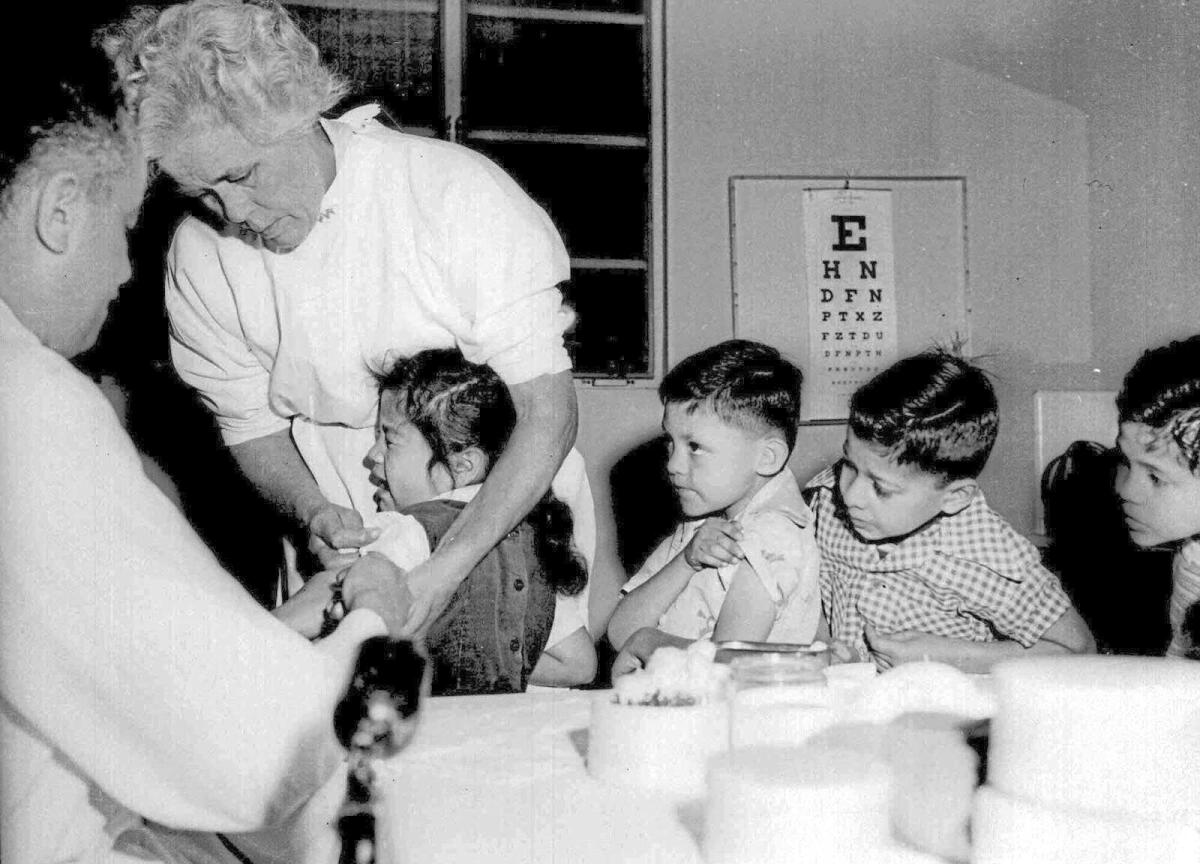
How it started: The first documented polio epidemic in the United States was in 1894. Outbreaks occurred throughout the first half of the 20th century, primarily killing children and leaving many more paralyzed.
Polio reached pandemic levels by the 1940s. There were more than 600,000 cases of polio in the United States in the 20th century, and nearly 60,000 deaths — a case fatality rate of 9.8%. In 1952 alone, there were 57,628 reported cases of polio resulting in 3,145 deaths.
“Polio was every mother’s scourge,” Benjamin said. “People were afraid to death of polio.”
Polio was highly contagious: In a household with an infected adult or child, 90% to 100% of susceptible people would develop evidence in their blood of also having been infected. Polio is not spread through the air — transmission occurs from oral-oral infection (say, sharing a drinking glass), or by “what’s nicely called hand-fecal,” Paula Cannon, a virology professor at the USC Keck School of Medicine, told me. “People poop it out, and people get it on their hands and they make you a sandwich.”
Polio, like COVID, could have devastating long-term effects even if you survived the initial infection. President Franklin Roosevelt was among the thousands of people who lived with permanent paralysis from polio. Others spent weeks, years, or the rest of their lives in iron lungs.
Precautions were taken during the polio pandemic. Schools and public pools closed. Then, in 1955, a miracle: a vaccine.
A two-dose course of the polio vaccine proved to be about 90% effective — similar to the effectiveness of our current COVID vaccines. Vaccine technology was still relatively new, and the polio vaccine was not without side effects. A small number of people who got that vaccine got polio from it. Another subset of recipients developed Guillain-Barre syndrome, a noncontagious autoimmune disorder that can cause paralysis or nerve damage. A botched batch killed some of the people who received it.
But there were no masses of polio anti-vaxxers. It was a “whole sense of the greater good, that this was the only way out of this terrible scourge,” Cannon said. “You would have had to have been a psychopathic monster to not want to be part of the solution.”
Benjamin said the polio vaccine campaign became a moment of national unity: “Jonas Salk and the folks that solved the polio problem were national heroes.”
By 1979, polio was eradicated in the United States.
How it ended: Vaccination
In a large study, the risk of a breakthrough infection was 10 times lower for people who got a COVID-19 booster shot than for people who hadn’t.
Smallpox
How it started: The disease had been observed in the Eastern hemisphere dating to as early as 1157 BCE, and European colonizers first brought smallpox to North America’s previously unexposed Native population in the early 1500s. A 2019 study suggested smallpox and other viruses introduced by colonizers killed as much as 90% of the indigenous population in some areas. Globally, smallpox is estimated to have killed more than 300 million people just in the 20th century. The case fatality rate of variola major, which caused the majority of smallpox infections, is around 30%.
Outbreaks continued in North America through the centuries after it arrived here, at one point infecting half the population of the city of Boston. We fought back by trying to infect people with a weakened version of it, long before vaccines existed. An enslaved man named Onesimus is believed to have introduced the concept of smallpox inoculation to North America in 1721 when he told slave owner Cotton Mather that he had undergone it in West Africa. Mather tried to convince Boston doctors to consider inoculating residents during that outbreak, to limited success. One doctor who inoculated 287 patients reported only 2% of them died of smallpox, compared to a 14.8% death rate among the general population.
In 1777, George Washington ordered troops who had not already had the disease to undergo a version of inoculation in which pus from a smallpox sore was introduced into an open cut. Most people who were inoculated developed a mild case of smallpox, then developed natural immunity. Some died, though at a far lower rate compared with other ways of contracting the disease. The practice of inoculation was controversial enough — some skeptics said it was not sufficiently tested, some argued it was doctors “playing God,” others theorized that it was a conspiracy from slaves to trick white slave owners into killing themselves — that it was banned in several colonies.
Edward Jenner first demonstrated the effectiveness of his newly created smallpox vaccine in England in 1796. Vaccination spread throughout the world, and deaths from smallpox became rarer over time: In a century, smallpox went from being responsible for 1 in 13 deaths in London to about 1 in 100.
But while early vaccines reduced smallpox’s power, it still existed: An outbreak hit New York City in 1947. It demonstrated that the vaccines were not 100% effective in everyone forever: 47-year-old Eugene Le Bar, the first fatality, had a smallpox vaccine scar. Israel Weinstein, the city’s health commissioner, held a news conference urging all New Yorkers to get vaccinated against smallpox, whether for the first time or what we would now call a “booster shot.”
The mayor and President Truman got vaccinated on camera. In less than one month, 6.35 million New Yorkers were vaccinated, in a city of 7.8 million. The final toll of the New York outbreak: 12 cases of smallpox, resulting in 2 deaths.
Our country’s final outbreak affected 8 people in the Rio Grande Valley in 1949.
In 1959, the World Health Organization announced a plan to eradicate smallpox globally with vaccinations. The disease was declared eradicated in 1980.
Of all the diseases our species has tackled, “the only one we’ve ever been really successful to totally eradicating is smallpox,” Benjamin said. The only remaining smallpox pathogens exist in laboratories.
How it ended: Vaccination
She’s called “Mama Tsega,” a determined community activist and City Hall confidant who speaks five languages and uses all of them to push for change.
HIV/AIDS
How it started: In 1981, the CDC announced the first cases of what we would later call AIDS.
Roughly half of Americans who contracted HIV in the early 1980s died of an HIV/AIDS-related condition within two years. Deaths from HIV peaked in the 1990s, with roughly 50,000 in 1995, and have decreased steadily since then: As of 2019, roughly 1.2 million Americans are HIV-positive; there were 5,044 deaths attributed to HIV that year.
The Reagan administration did not take HIV seriously for years. Unlike COVID, which was quickly identified as a respiratory disease, HIV spread for years before scientists knew for sure how it was transmitted. Gay activists who encouraged their community to use condoms in the early 1980s were criticized as “sex-negative.”
Today, we know how to prevent the spread of HIV, and treatments for it have progressed to the point where early intervention can make the virus completely undetectable.
“If you’re HIV positive, the HIV pandemic never went away for you,” said Cannon, who’s spent much of her career studying the virus. She described it as a “great irony” that we identified the cause of COVID and developed a vaccine within a year, only to have people refuse it: “Anybody with HIV would tell you that the opposite is true for HIV, where despite decades now of research, we have not been able to come up with vaccines that work against this shapeshifter of a virus that is HIV, and people would be desperately pleased if there were vaccines.”
Around 700,000 people in the U.S. have died of HIV-related illnesses in the 40 years since the disease appeared. In less than two years of the COVID-19 pandemic, we’ve surpassed 800,000 COVID deaths.
How it ended: Endemic
The Omicron variant was probably incubated in a person with poorly controlled HIV who struggled to clear a coronavirus infection.
SARS
How it started: SARS first appeared in China in 2002 before making its way to the United States and 28 other countries.
Severe acute respiratory syndrome — quickly shortened to SARS in headlines and news coverage — is caused by a coronavirus named SARS-CoV, or SARS-associated coronavirus. COVID-19 is caused by a virus so similar that it’s called SARS-CoV-2.
Globally, more than 8,000 people contracted SARS during the outbreak, and 916 died. (By comparison, there were 10 times more cases of COVID-19 than that registered globally by the end of February 2020.)
One hundred fifteen cases of SARS were suspected in the United States; only 8 people had laboratory-confirmed cases of the disease, and none of them died.
Like COVID-19, fatality rates from SARS were very low for young people — less than 1% for people under 25 — up to a more than 50% rate for people over 65. Overall, the case fatality rate was 11%.
Public anxiety was widespread, including in areas unaffected by SARS.
SARS and COVID-19 have a lot in common. But the diseases — and the way the government responded to them — weren’t exactly the same, said Benjamin, who worked for the CDC during the SARS epidemic.
“There wasn’t asymptomatic spread. Early on we had a functional test. We had a public health system that was in much better shape than it is today. All those things went wrong this time,” he said. “And [COVID-19] turned out to be much more infectious, it turned out to have asymptomatic spread. ... [In 2020] you had a public health system which wasn’t ready for prime time because it hadn’t been invested in.”
Conversely, he said, the response to SARS was robust and immediate. The WHO issued a global alert about an unknown and severe form of pneumonia in Asia on March 12, 2003. The CDC activated its Emergency Operations Center by March 14, and issued an alert for travelers entering the U.S. from Hong Kong and parts of China the next day. Pandemic planning and guidance went into effect by the end of that month.
“When [public health organizations] had the actual genetic sequence mapped out and then they made a test for it, they rapidly got that test out to state and local health departments, they began screening, doing surveillance, we contained it very quickly, we communicated effectively to the public, and it worked,” he said.
In the case of SARS, the disease stopped spreading before a vaccine or cure could be created. Scientists knew another coronavirus could emerge that was more contagious. They laid the groundwork for developing the COVID-19 vaccines we have now.
How it ended: Died out after being controlled by public health measures
Swine flu

How it started: Both the Spanish flu and swine flu were caused by the same type of virus: influenza A H1N1.
Ultimately, according to the CDC, there were about 60.8 million cases of swine flu in the U.S. from April 2009 to April 2010, with 274,304 hospitalizations and 12,469 deaths — a case fatality rate of about 0.02%. So there were millions more cases of swine flu than there were of COVID-19 in the same time period, but a fraction of the fatalities. Eighty percent of swine flu deaths were in people younger than 65.
It was first detected in California on April 15, 2009, and the CDC and the Obama administration declared public health emergencies before the end of that month. As with COVID-19, hospital visits spiked. Hundreds of schools closed down temporarily. In Texas, a children’s hospital set up tents in the parking lot to handle emergency room overflow; several hospitals in North Carolina banned children from visiting. Hospitals near Colorado Springs, Colo., reported a 30% increase in flu visits. Three-hundred-thousand doses of liquid Tamiflu for children were released from the national pandemic stockpile.
In the same month cases were first detected, the CDC started identifying the virus strain for a potential vaccine. The first flu shots with H1N1 protections went into arms in October 2009. WHO declared the swine flu pandemic over in August 2010. But like Spanish flu, swine flu never completely went away.
How it ended: Endemic
Ebola
How it started: From 2014 to 2016, 28,616 people in West Africa had Ebola, and 11,310 died — a 39.5% case fatality rate. Despite widespread fears about it spreading here — including close to 100 tweets from the man who would be president when the COVID-19 pandemic began — only two people contracted Ebola on U.S. soil, and neither died.
So how did we escape Ebola? Unlike COVID, Ebola isn’t transmitted in the air, and there’s no asymptomatic spread. It spreads through the bodily fluids of people actively experiencing symptoms, either directly or through bedding and other objects they’ve touched. If you haven’t been within three feet of a person with Ebola, you have almost no risk of getting it.
Part of the problem in Africa, Benjamin said, was that families traditionally washed the bodies of the deceased, exposing themselves to infected fluids. And healthcare workers who treated patients without proper protective equipment or awareness of heightened safety procedures were at risk. Once adequate equipment was delivered to affected areas and precautions were taken by healthcare workers and families of the victims, the disease could be controlled. People needed to temporarily change their behavior to respond to the public health crisis, and they did.
While this particular outbreak ended in 2016, it’s very possible we will see another Ebola event in the future. An Ebola vaccine was approved by the FDA in 2019.
How it ended: Subsided after being controlled by public health measures
How will COVID end?
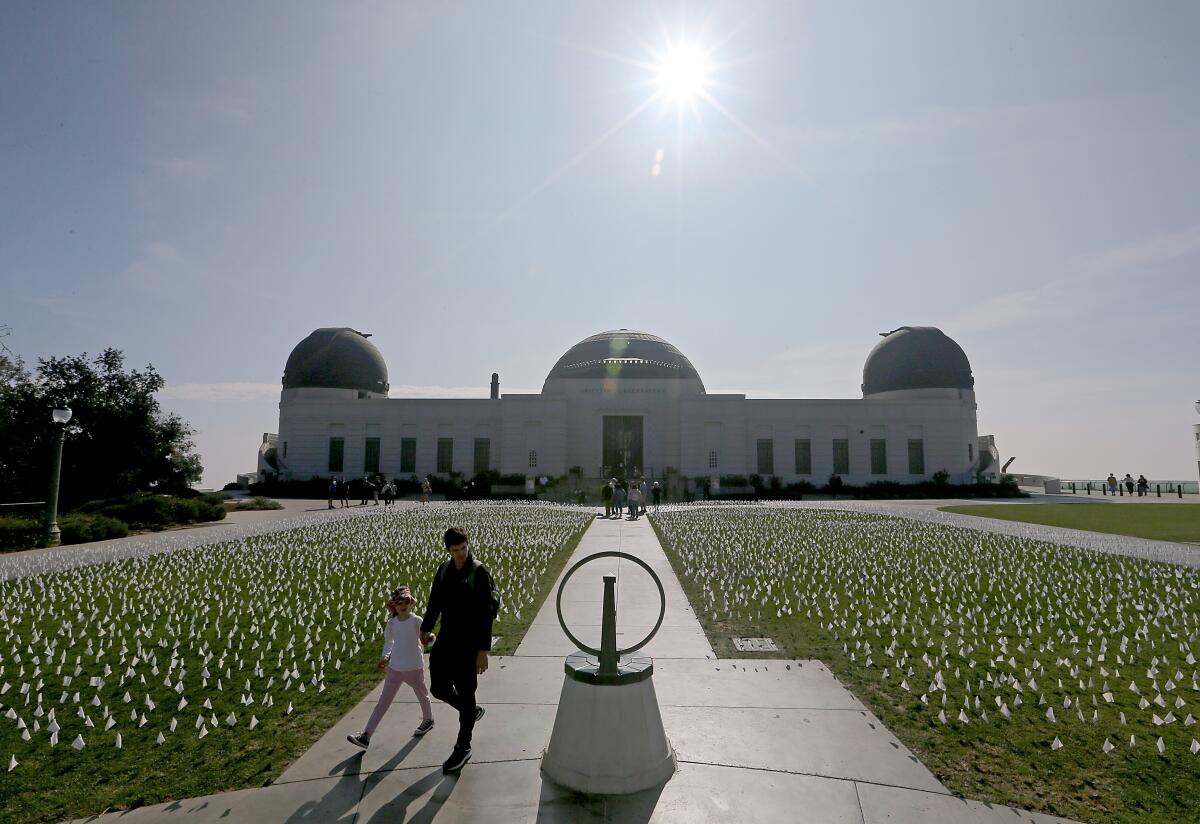
Big picture, “pandemics end because the disease is unable to transmit itself through people or other vectors that allow the transmission of the disease,” Benjamin said.
The most likely outcome at this point is that COVID-19 is here to stay, he said: “I think most people now think that it will be endemic for a while.” On Twitter, his colleagues in epidemiology and public health seem to agree.
COVID has a lot going for it, as far as viruses go: Unlike Ebola and SARS, it can be spread by people who don’t realize they have it. Unlike smallpox, it can jump species, infecting animals and then potentially reinfecting us. Unlike polio, one person can unwittingly spread it to a room full of people, and not enough people are willing to get vaccinated at once to stop it in its tracks. It’s less contagious than swine flu, and less deadly than Ebola, landing it in a sort of perverse sweet spot where it infects a lot of people but doesn’t kill enough of them to run out of victims. For many people, it’s mild enough that it convinces others they don’t have to take the disease or precautions against it seriously. No one thought that about smallpox or Ebola.
In a conversation I had with Cannon for a different story in May 2020, she told me if someone were designing a virus with the maximum capacity to succeed, it would look a lot like this coronavirus.
“One of the really superpower things about this virus is its stealthiness,” she told me then. “So you can feel fine, you can go hang out with friends and not obey the six-foot rule and the next morning you feel like death and you’re like, ‘oh crap.’” Back then, she contrasted it with the way we shut down SARS: “The reason we could stop it is everybody who had SARS, you were only infectious while you were sick. You woke up one day feeling like death and that was the day you were infectious. Infected people couldn’t walk among us. ... With this coronavirus, they walk amongst us.”
So what happens next? In some populations, enough people will get vaccinated to achieve something like herd immunity. In others, it will burn through the population until everyone’s had it, and either achieves naturally gained immunity (which confers less long-term protection than vaccination) or dies. People still die from influenza and HIV in the United States; a disease becoming endemic isn’t exactly a happy ending.
“We tolerate the tragedy a lot better when it’s a disease that we’ve seen before,” Benjamin said. “It is less scary to us.”
Based on where we are now, “I don’t think COVID-19 will ever go away,” Cannon said.
We’re still learning about the Omicron variant. Early reports out of South Africa suggest it may be a more contagious but milder version of the disease, though it’s too early to say for sure. In a perfect world, COVID would go away entirely; with that possibility almost certainly off the table, an attenuated strain that displaces the Delta variant and turns COVID into an illness that rarely requires hospitalization is perhaps the best we can hope for at this point.
How it ends: A combination of vaccine- and naturally-gained immunity, attenuation, availability of rapid testing, and improvements in treatment for active cases could turn it into what skeptics wrongly called it to begin with: a bad cold or flu.

